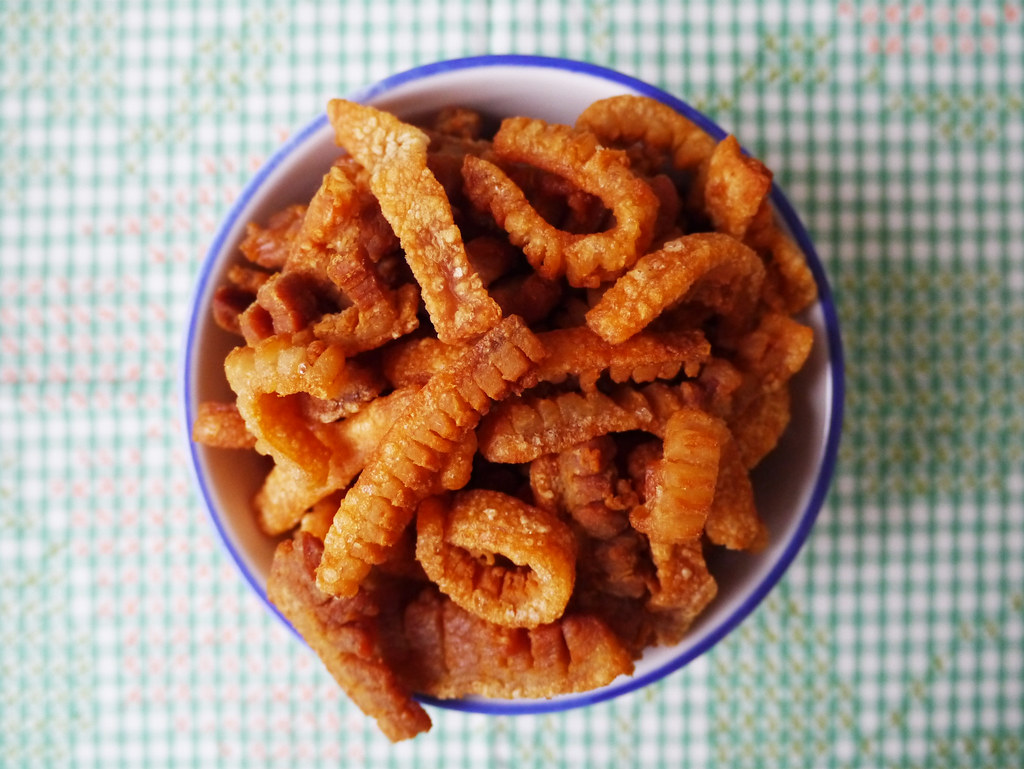
Delicious, grub-like morsels of pork crackling. They’re more addictive than crisps and Pringles!
Note: Before scrolling down, please be warned that this post contains demonstrative photos of pork meat being prepared. If you think you might find this offensive, please read a different post, perhaps How to make garlic, ginger and shallot oil?
~
[dropcap]Unless[/dropcap] you don’t eat pork (for whatever reason that may be [in which case, I am sorry – this post is not really for you {but you might still enjoy it and perhaps even convert – so please read on}]) – you’d have to agree that there’s really nothing more delicious to snack on than crispy and crunchy moreish this-is-not-too-good-for-me-i-know-but-just-one-more-piece-won’t-hurt fatty morsels of pork crackling/pork rind (fried or roasted – take your pick), famed across the world and known among its many fans as either pork scratching, chicharon, scrunchions, gratton, kiep moo, etc. 1
Pork crackling/pork rind, in all of its incarnations is a popular meat treat worldwide where it’s often served as a snack or accompaniment to a dish or meal, or added to recipes. It is often a byproduct when pork fat is rendered to make lard – that glorious traditional fat with the incomparable taste and multiple uses. This is why this recipe is so special – because, when frying/rendering pork fat and skin, you end up with both the crunchy crackling treats and also the divine unctuous lard that you can add to recipes and/or fry with. 2
In Lao cuisine, pork crackling is called “kiep moo” and lard is called “narm mun moo” and not surprisingly, kiep moo is a popular accompaniment to have with many dishes including tum mark hoong and “mieng” (Lao ground rice paste wraps), or to simply snack on in front of the tv, like I do. It can also be used to make “jeow kiep moo” – a variation of the ubiquitous Lao jeow (relish/sauce), which is a combination of pounded pork crackling with grilled herbs and spices. Narm mun moo, when available is a favoured choice over normal cooking oil when stir-frying.
The method of making pork crackling and lard is very simple, requiring only some prep time of chopping and slicing the pork pieces with a sharp knife/scissors and then gently frying and stirring them until the fat is rendered and the pork pieces turn crunchy and delicious. You can also roast the pork pieces instead – however, I find that the frying method is easier and I also have more control over the process. Depending on what cut of pork you’re using, and how much pork fat you’re frying, by adding a little cooking oil to the pan/wok before adding the pork pieces – this helps the pork to fry/render without burning or sticking to the surface.
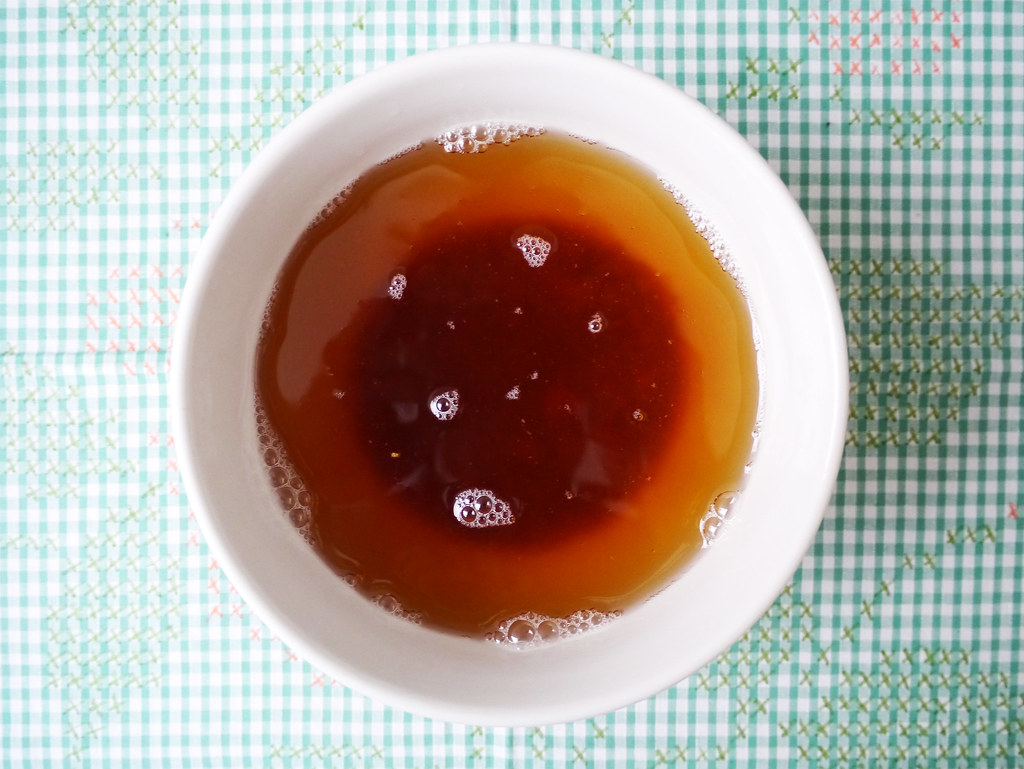
Glorious pork lard – freshly rendered.
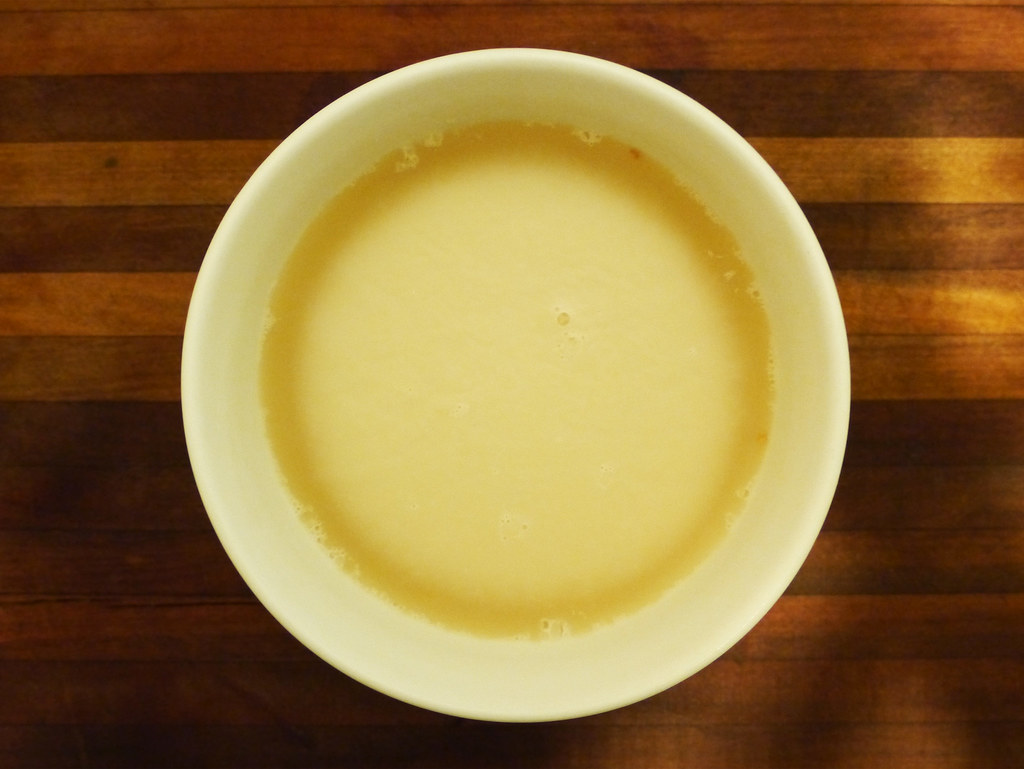
Pork lard – 3 hours later (after placed in the fridge).
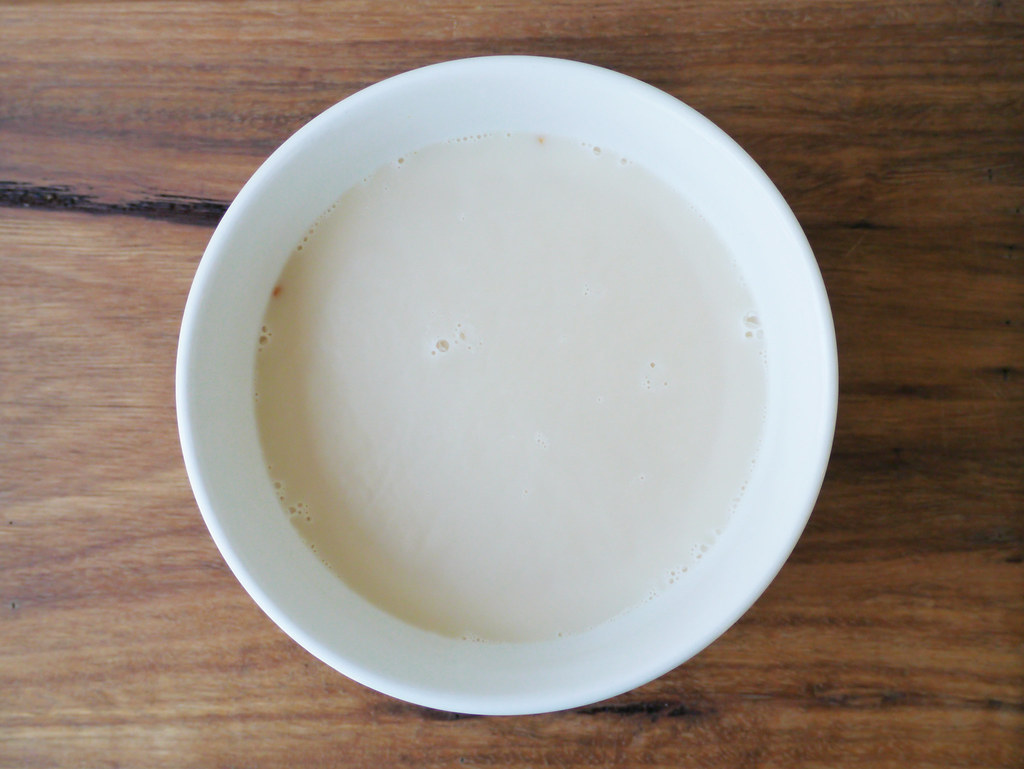
Pork lard – 24 hours later.
For me, the ideal ‘cut of pork’ to use to make both pork crackling and lard is pork belly because it has both the pork skin and a good layer of pork fat and pork meat. Alternatively, depending on what you want to make more of (pork crackling or lard), you can also use just pork rind/skin (which sometimes has some fat on it), or pork ‘leaf lard’ or pork ‘fatback’ which has more fat and are choice cuts to render lard with. 3
Pork spare ribs is another good option which is similar to pork belly. These cuts can sometimes be found at your local supermarket, otherwise, simply order them from your friendly butcher. If you decide to use the pork belly or pork spare ribs, cut off/remove the layer of meat from the skin and fat first, so that you can cut/score the underside of the skin/fat, which helps the fat render/cook faster and more evenly. 4
Pork crackling is a delicious snack food but also very addictive so be sure to restrain yourself when eating them. Everything in moderation, right? It’s obvious that pork crackling will not win the healthiest snack food of the year award, but I simply love them and that’s the reason why I’m sharing this recipe with you, and it’s a bonus that you can render and use the pork lard in your recipes as well. If you eat pork, then it’s most likely that you’ve experienced the joy of eating pork crackling before and know how good it tastes and can appreciate this recipe.
My pescetarian partner shivers when he sees me making and eating these, but once in a while it’s nice to treat myself to some. Our dog loves them also, so I don’t feel completely guilty making them. I hope you give this recipe a try and enjoy both the pork crackling and lard. You can make a small amount or a lot and serve as much as you want when needed and keep the rest locked in the fridge for later. Bon appetit and sern sap!
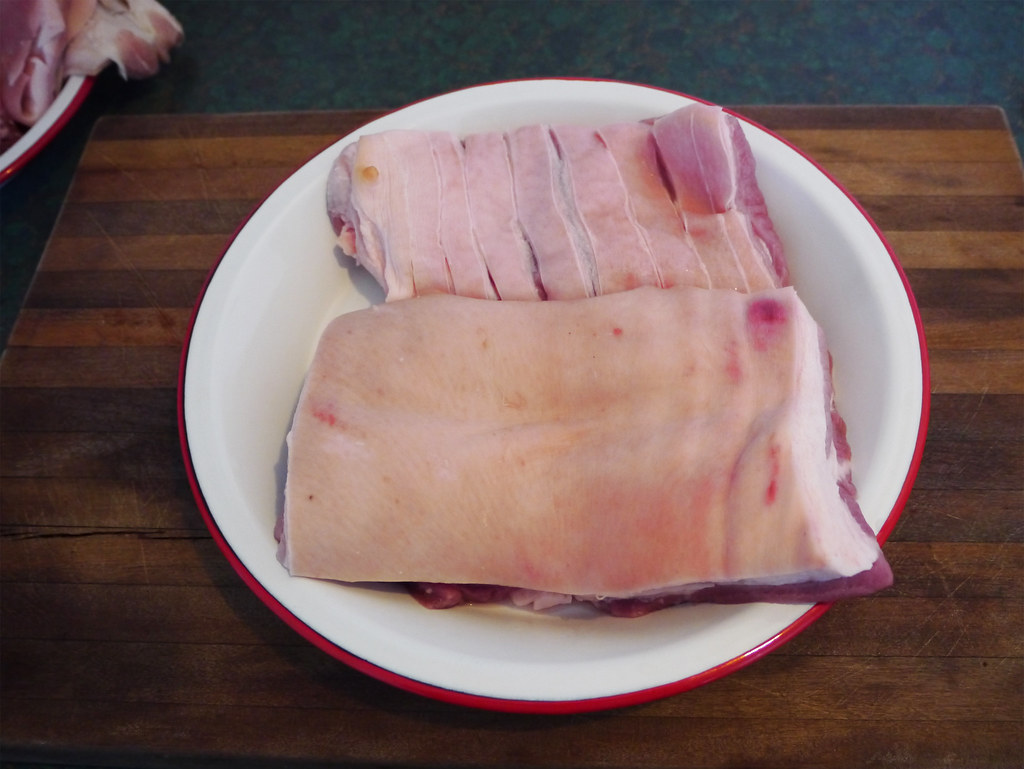
Pork belly.
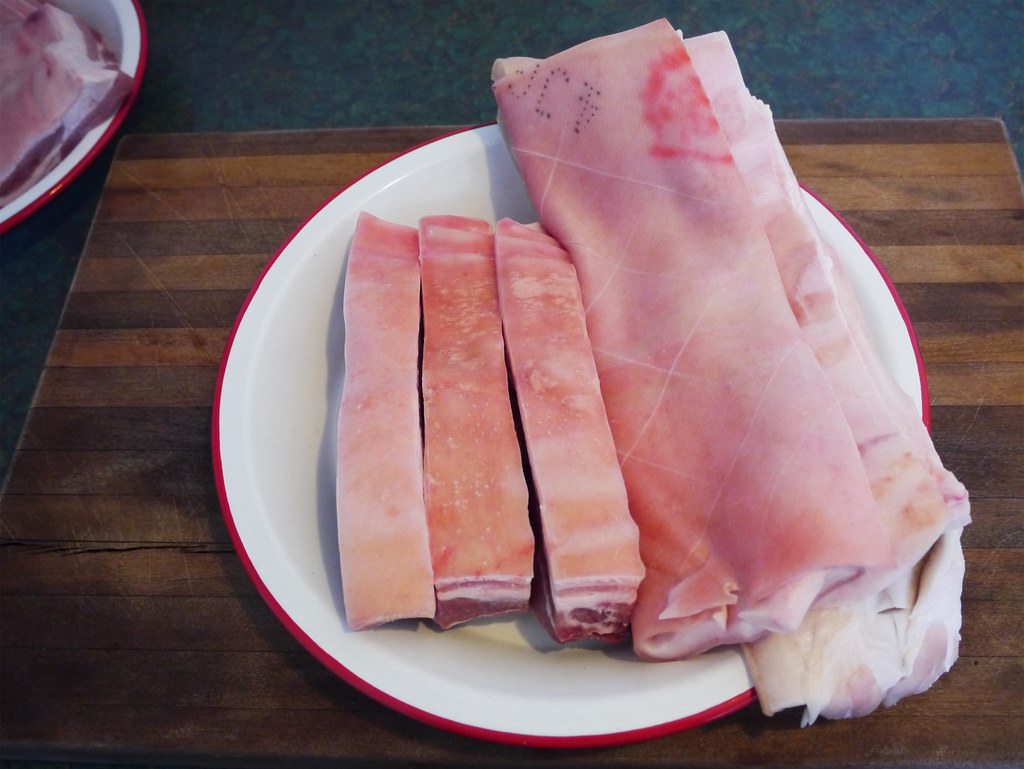
Pork spare ribs and pork rind/skin.

With a sharp knife, cut the underside of the pork rind with long straight lines. Don’t cut all the way through.
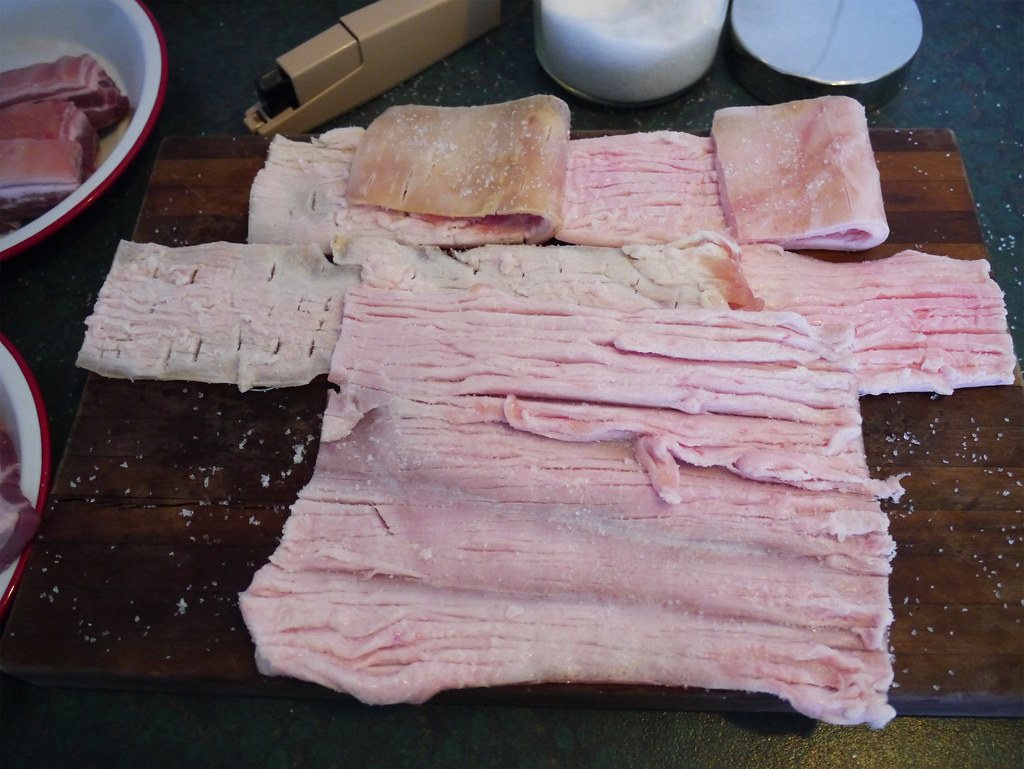
Lightly sprinkle some salt to both sides of the pork rind and rub all over. Note: If you want your pork crackling and lard to remain saltless, you can skip this step.
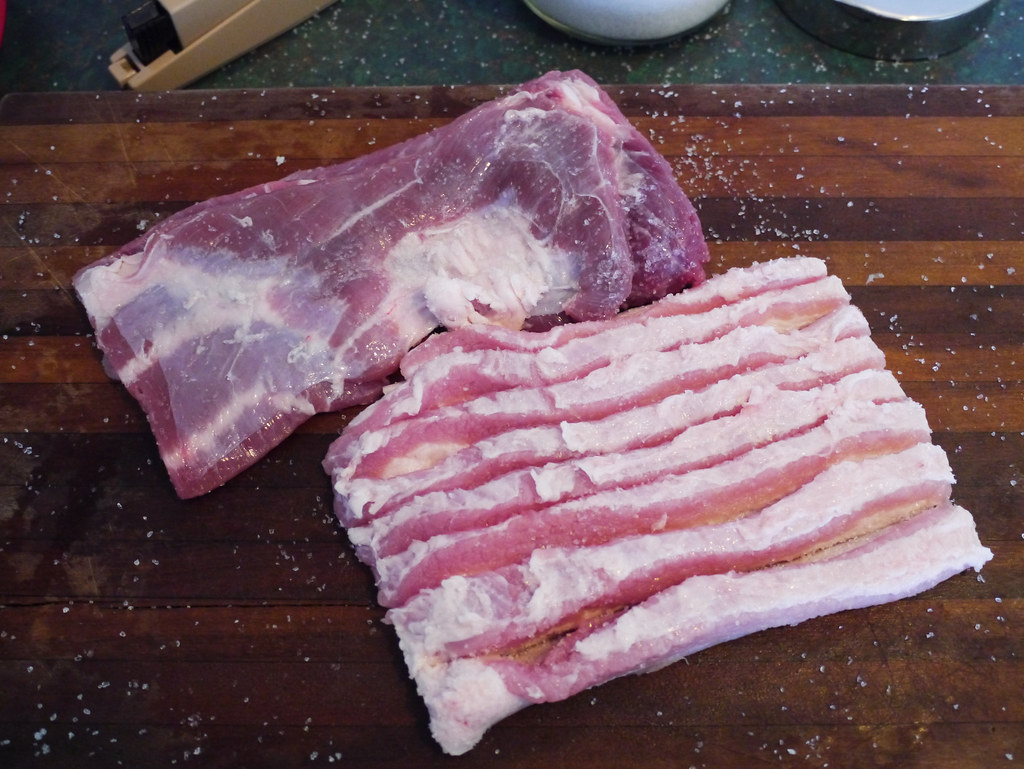
If you’re using pork belly or pork spare ribs, remove the layer of meat from underneath the pork skin first, before cutting the underside of the skin/fat with a knife.
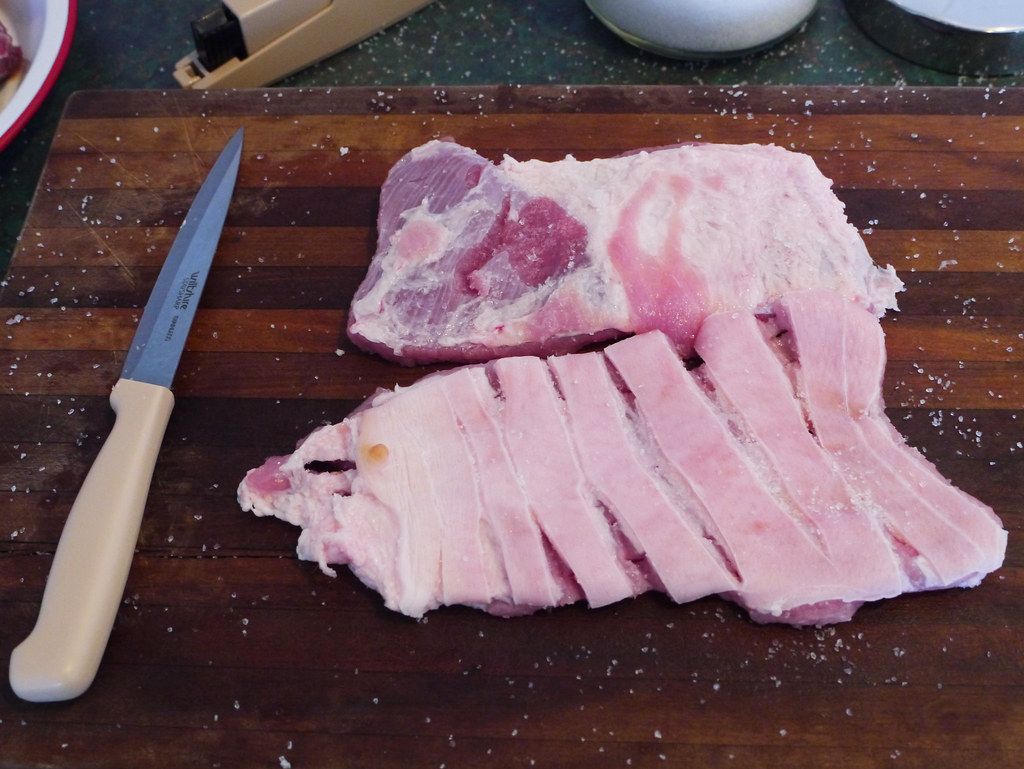
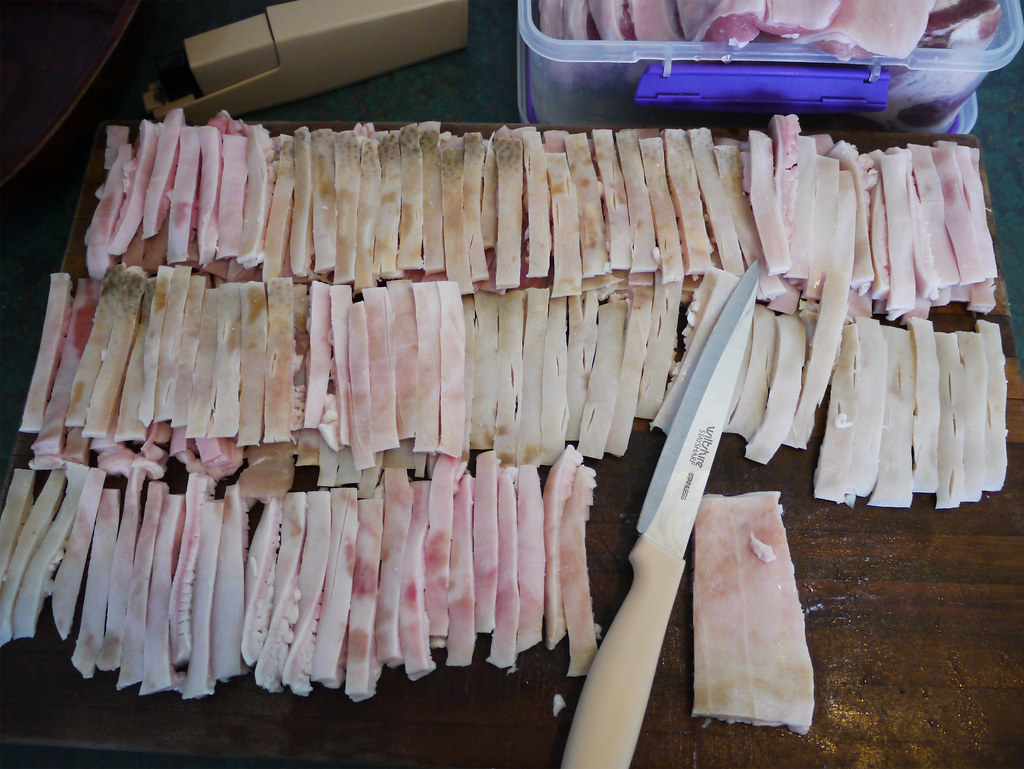
With a sharp knife or kitchen scissors, cut the pork skin into small pieces/strips. Remember that once cooked, the pork skin/crackling will shrink in size and also possibly curl up if it is a long strip. I like to cut them into about 1 cm x 5 cm pieces, but it’s really up to you how big and what shape you want your pork crackling to be. Note: I can’t speak highly enough about these self-sharpening knives. This one was given to me as a gift and it is incredibly sharp and although it looses some if its sharpness from time to time, especially from cutting the pork skin, by simply re-sharpening it in its case, it returns to its prime performance. I recommend them for this job, and please be extra careful when using them.
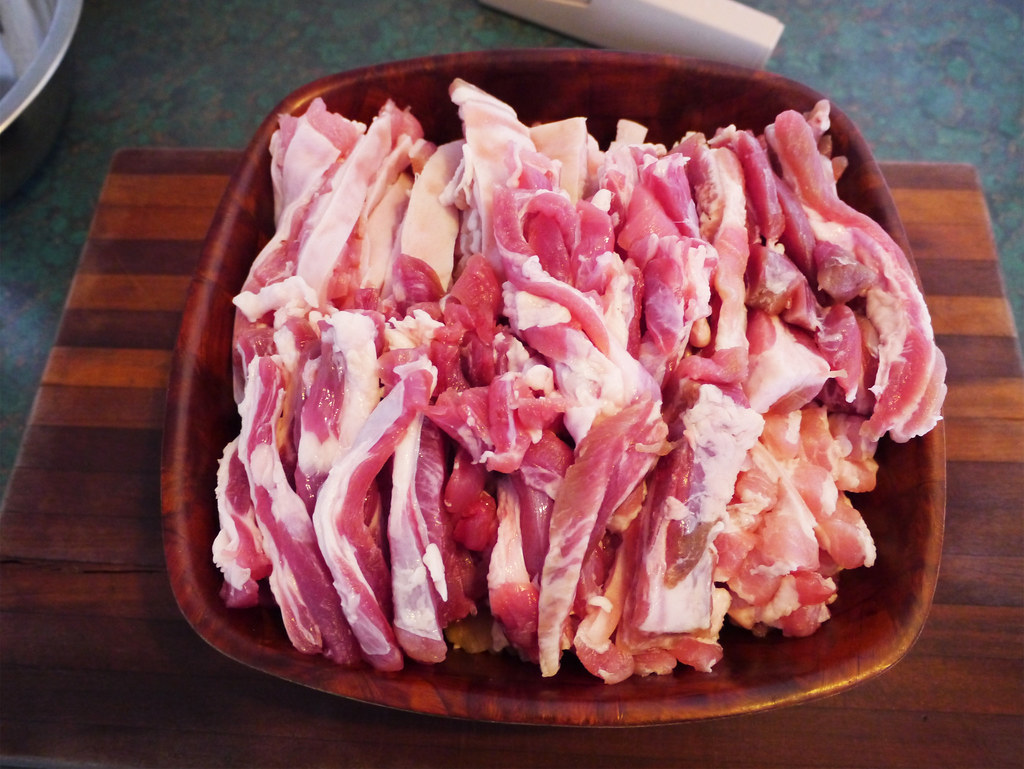
If you’re using pork belly or pork spare ribs, cut the fat and meat into small pieces as well. They also make delicious crunchy treats once cooked. Or, you can reserve them for another recipe.

In a saucepan or wok, add the cooking oil and bring to low-medium heat.
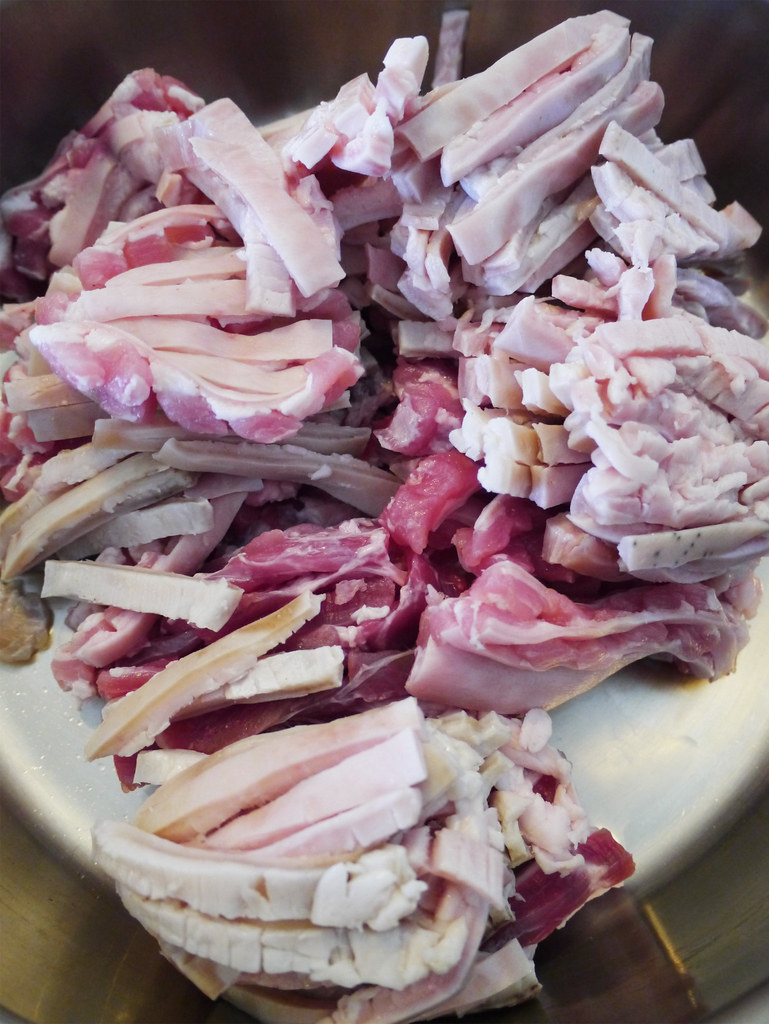
Add the sliced pork skin, fat and meat pieces and gently stir together.
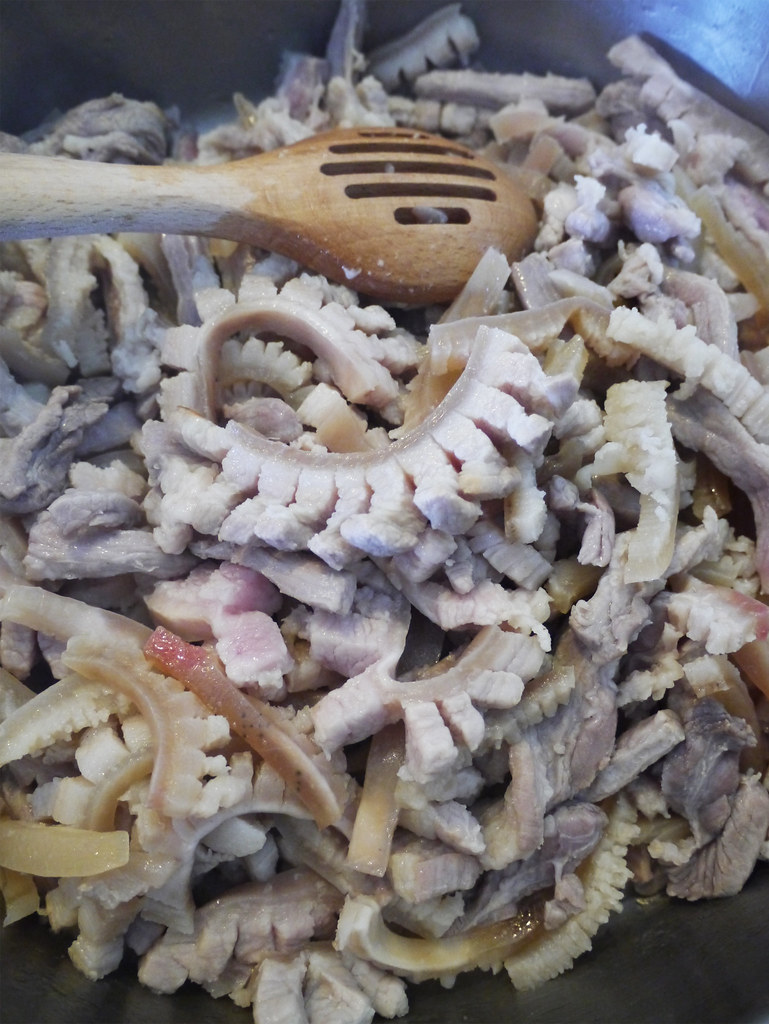
Continue to cook/fry the pork pieces and regularly stir.
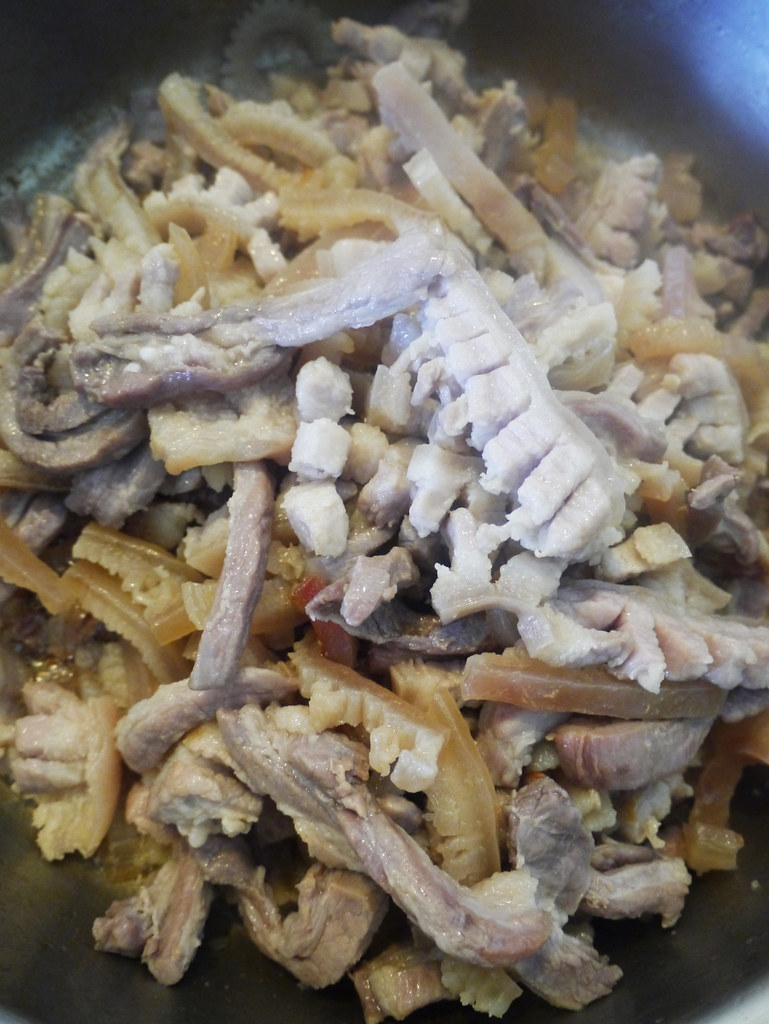
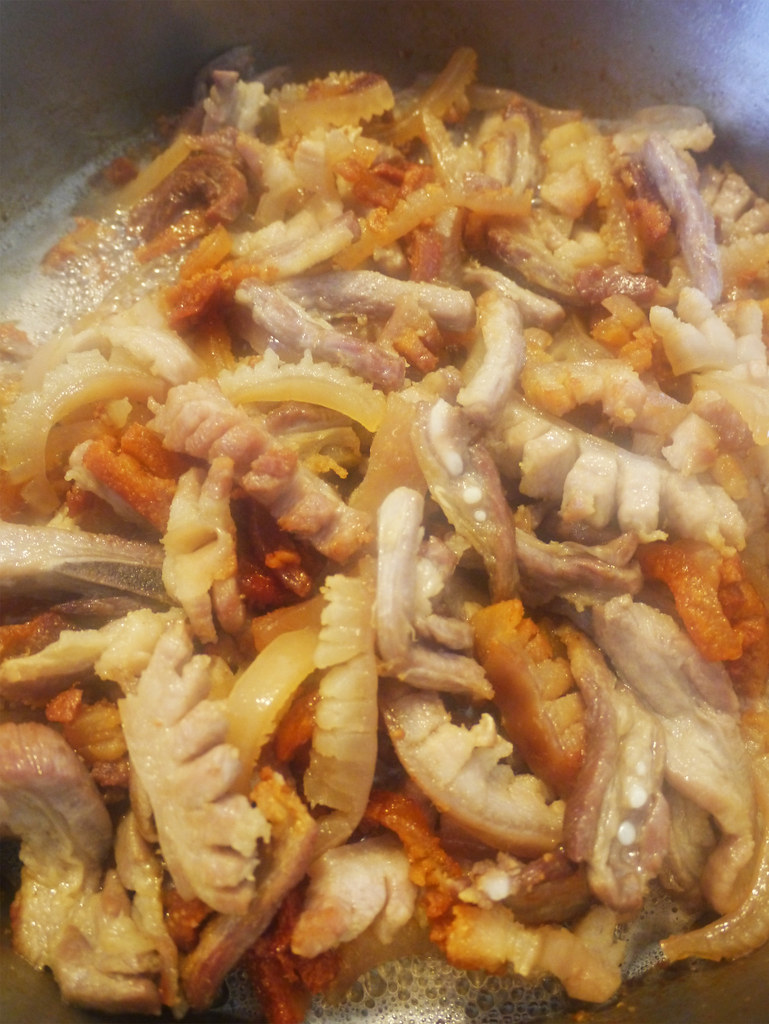
Be extra careful of the hot oil when stirring because it can pop and spit at you.
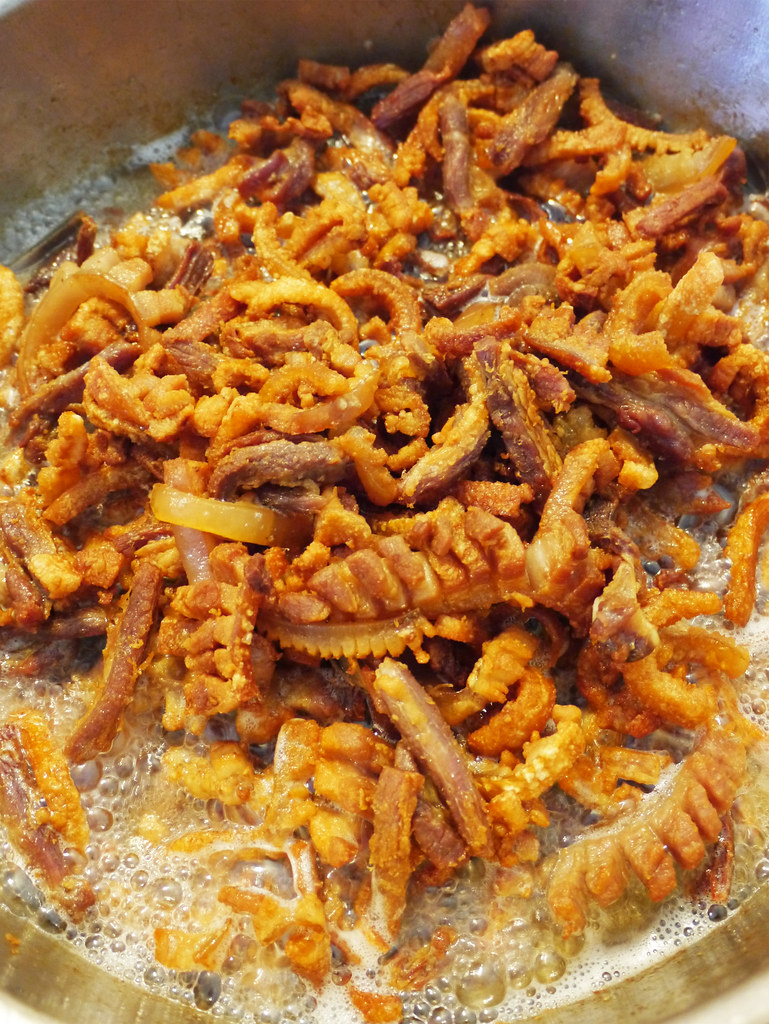
When the pork pieces turn to a light brown colour, you can increase the heat to medium. This will cause the pork skin to blister and become more crunchy and crackly. Be careful to not overcook, and the oil will also get hotter and possibly pop and spit even more.
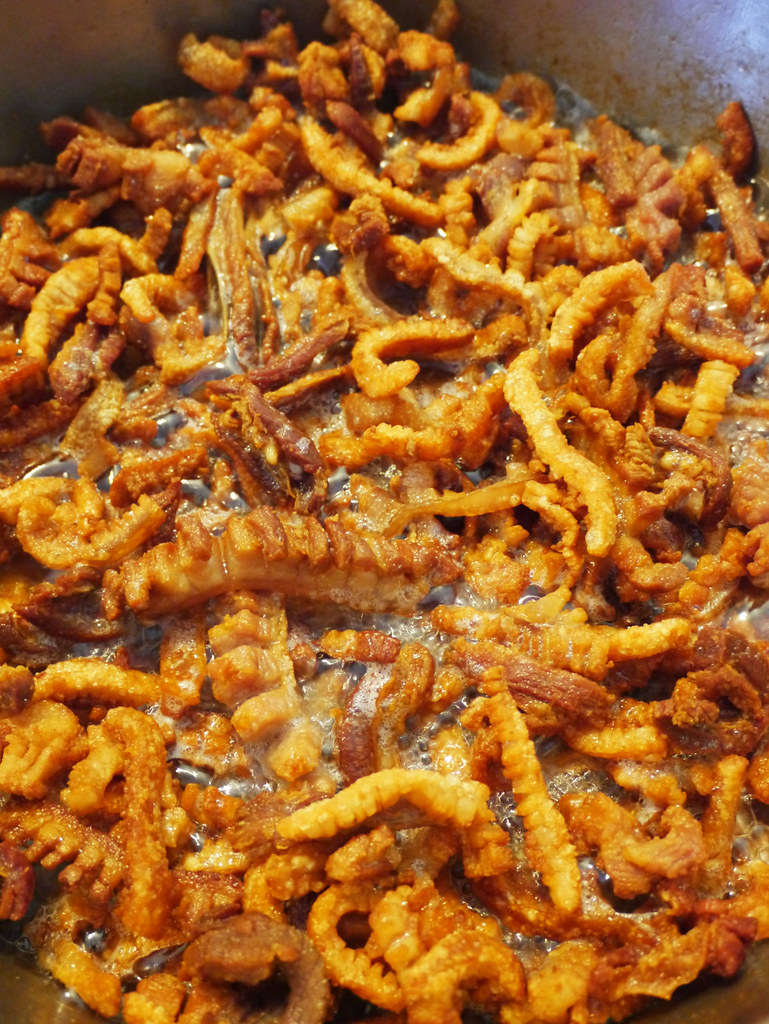
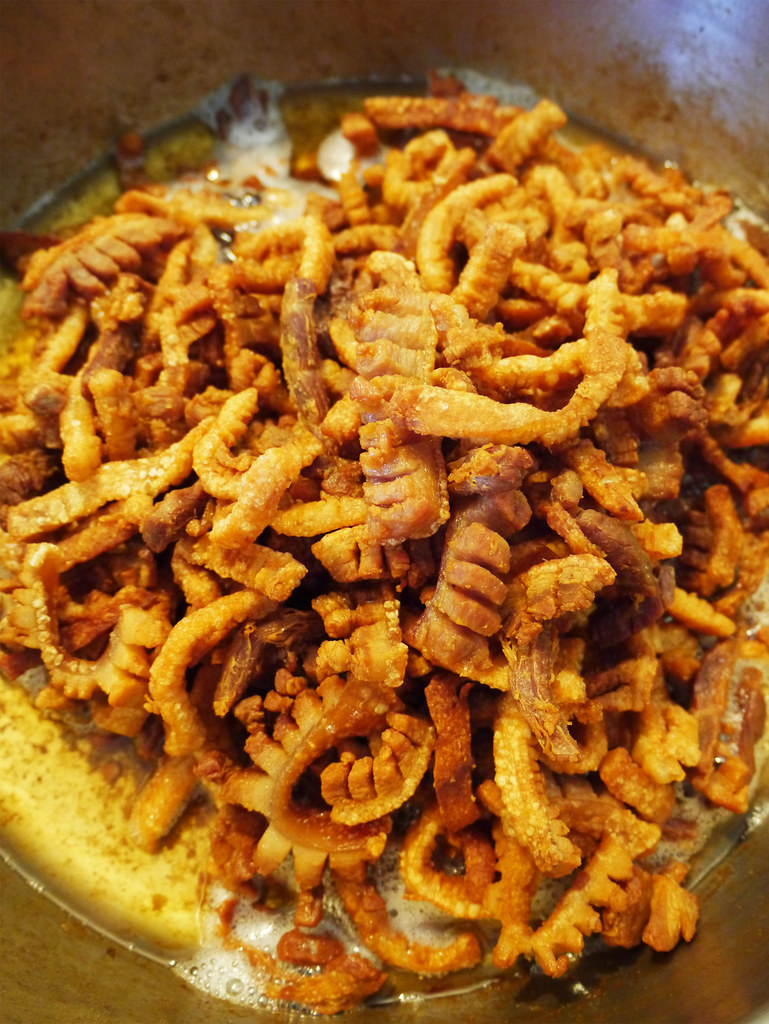
After about 20 mins of cooking and stirring (depending on how much crackling you’re making and how hot the heat is), the pork pieces will turn to a light golden colour and look crunchy and delicious! I prefer my pork crackling to still be a little soft and unctuous, and not too crunchy or crispy, so the ones in the photo above look just right to me. They look a little like caterpillars/grubs, don’t you think?
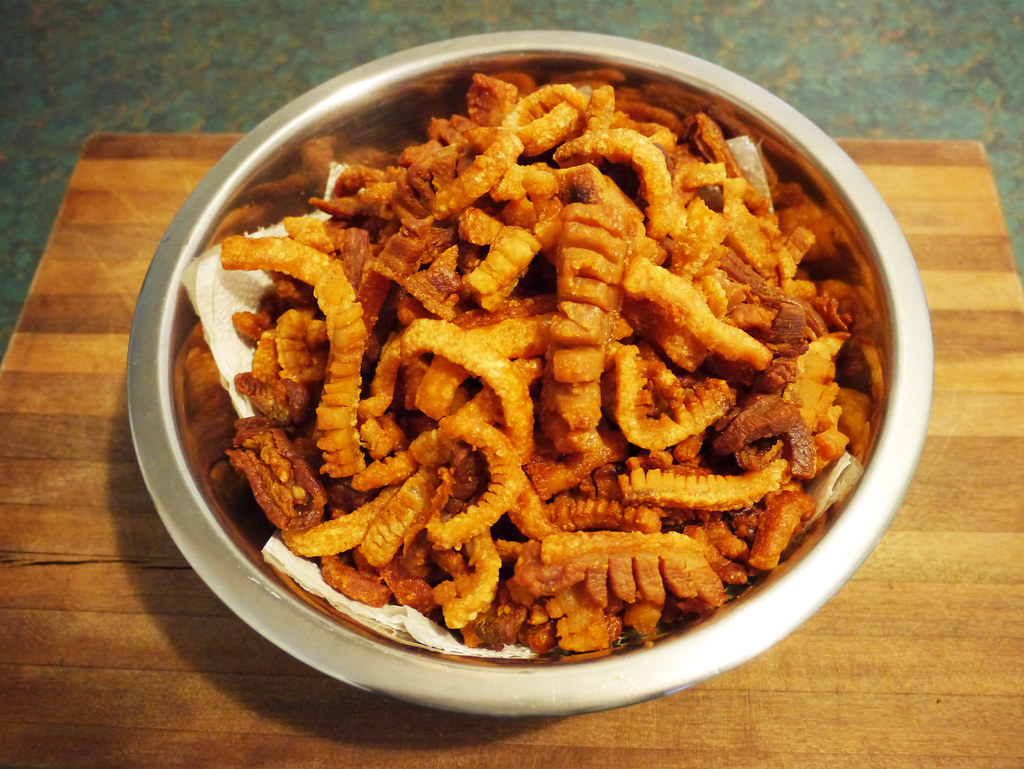
When they’re ready, turn off the heat, and strain the cooked pork crackling pieces from the oil to a bowl. Let the oil/lard cool down and then transfer it to a bowl or container and store it in the fridge for later use in your recipes, etc.
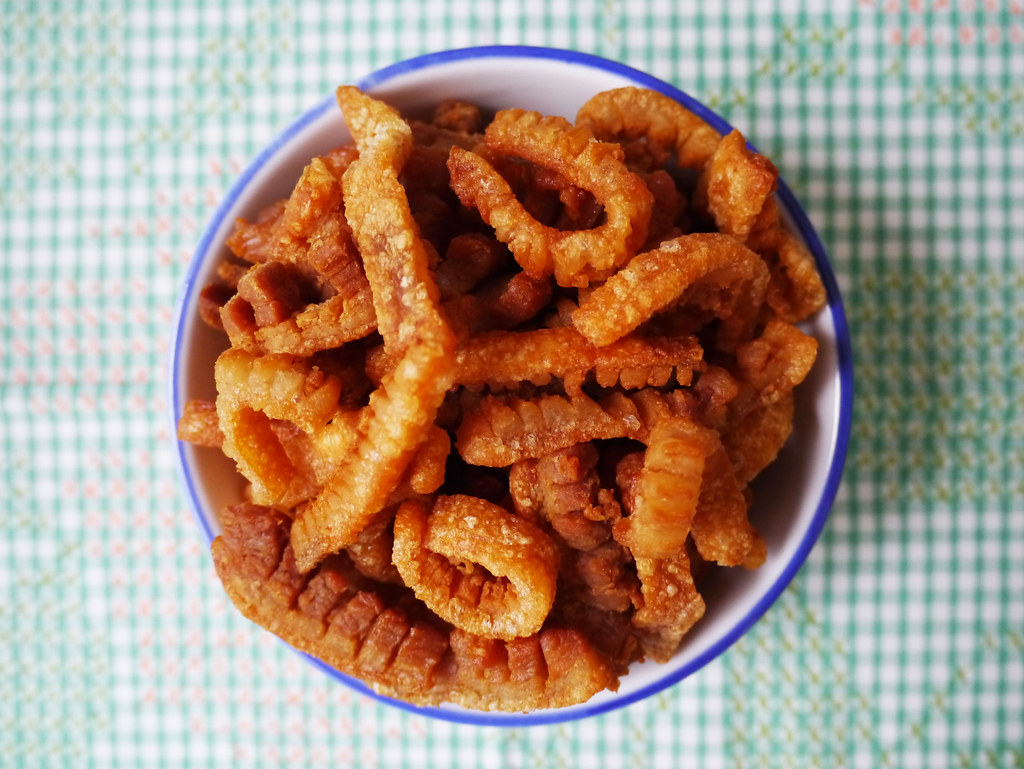
You can sprinkle the pork crackling with seasoning of your choice. Serve as a snack with your favourite drink or as an accompaniment with your meal. Enjoy sparingly. Bon appetit!
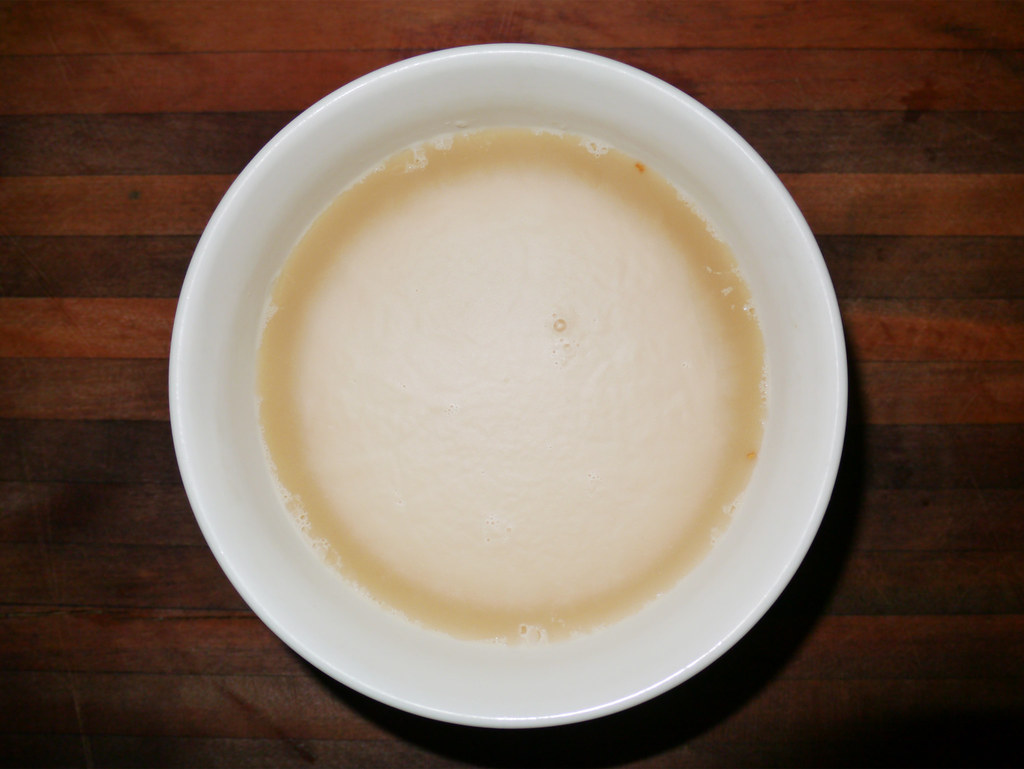
Pork lard – 3 hours later (with flash).
- Pork rind/skin (or pork belly or pork spareribs)
- 3 tablespoon of cooking oil
- salt
- With a sharp knife, cut the underside of the pork rind with long straight lines. Don't cut all the way through.
- Lightly sprinkle some salt to both sides of the pork rind and rub all over. Lightly sprinkle some salt to both sides of the pork rind and rub all over. Note: If you want your pork crackling and lard to remain saltless, you can skip this step. If you're using pork belly or pork spare ribs, remove the layer of meat from underneath the pork skin first, before cutting the underside of the skin/fat with a knife.
- With a sharp knife or kitchen scissors, cut the pork skin into small pieces/strips. Remember that once cooked, the pork skin/crackling will shrink in size and also possibly curl up if it is a long strip. I like to cut them into about 1 cm x 5 cm pieces, but it's really up to you how big and what shape you want your pork crackling to be. Note: If you're using pork belly or pork spare ribs, cut the fat and meat into small pieces as well. They also make delicious crunchy treats once cooked. Or, you can reserve them for another recipe.
- In a saucepan or wok, add the cooking oil and bring to low-medium heat.
- Add the sliced pork skin, fat and meat pieces and gently stir together.
- Continue to cook/fry the pork pieces and regularly stir. Be extra careful of the hot oil when stirring because it can pop and spit at you.
- When the pork pieces turn to a light brown colour, you can increase the heat to medium. This will cause the pork skin to blister and become more crunchy and crackly. Be careful to not overcook, and the oil will also get hotter and possibly pop and spit even more.
- After about 20 mins of cooking and stirring (depending on how much crackling you're making and how hot the heat is), the pork pieces will turn to a light golden colour and look crunchy and delicious!
- When they're ready, turn off the heat, and strain the cooked pork crackling pieces from the oil to a bowl. Let the oil/lard cool down and then transfer it to a bowl or container and store it in the fridge for later use in your recipes, etc.
- You can sprinkle the pork crackling with seasoning of your choice.
- Serve as a snack with your favourite drink or as an accompaniment with your meal. Enjoy sparingly. Bon appetit!
Did you know?
- Pork is the most widely eaten meat in the world accounting for over 36% of the world meat intake. It is followed by poultry and beef with about 33% and 24% respectively. 5
- Pigs are in fact very clean animals and even dung in a specific area of their pen. Pigs keep separate areas for sleeping, eating and dunging. When hot, they cover themselves in mud because they do not sweat. The mud works as a cooling mechanism. 6
Notes:
- Pork crackling and pork rind, as defined in this post refers to cooked (fried or roasted) pork skin, with or without some pork fat/meat attached to it. I personally like my pork crackling to have some fat and meat on it for the added texture, flavour and crunch. When making pork crackling, I like incorporate a mixture of plain pork skin, pork rind with some fat and meat on it, pork belly and other cuts of pork. The result is a wonderful medley of assorted pork crackling and “other” delectable pork bits and pieces. For this recipe, I’ve used the frying method to make the pork crackling (and lard). Alternatively, you can use the roasting method by simply placing the pork pieces in the oven. There’s much discussion on cooked pork rind/pork skin, including its definition, names and variations (for example, what part of the pork is used, how the pork skin is prepared/cooked, what seasoning is used, etc). The depth of this topic is beyond the scope of this post. For more info, go to: http://en.wikipedia.org. ↩
- Ready-made pork crackling is often available at many Asian grocery stores. Some snack companies, such as Nobbys also makes a variety of them. But believe me, if you enjoy the commercial pork crackling, you will LOVE the home-made ones even more! ↩
- For more info on pork lard, read this: http://en.wikipedia.org/wiki/Lard. ↩
- Crackling can also be made from other types of animal skin/fats, including pork ears, chicken skin, duck skin, fish skin, etc. I will endeavour to publish recipes on how to make these other types of crackling for you in the near future. Good excuse for me to make and eat more crackling really. ↩
- Source: FAO Trade and Markets Division, 2008. Reference: http://www.fao.org. ↩
- Reference: http://www.aussiepigfarmers.com.au. ↩
Fascinating and useful. Reminds me of eating kiep moo with Northern-Thai style pork-tomato-onion ‘dip/sauce’ called nahm prik ohng. Rich meaty dip, sticky rice, and kiep moo, all those different textures and rich flavors. Mmmmm Very informative and useful.
Hi Nancie,
Thank you for your comment. I know nahm prik ohng very well. When I used to work in Thai restaurants, it was one of the more popular dishes ordered. And I agree, it’s a delicious dish and the combination of the sauce, kiep moo, sticky rice and other condiments is a wonderful mix of texture and flavours. What I like most about making kiep moo and lard is that it’s using a unpopular cut of meat and turning it into something delicious. The flavour and texture of pork crackling is amazing and it pairs/complements other dishes and flavours really well. I love the inventiveness of humans when it comes to food. My dad was a big kiep moo fan although I don’t think he eats them as much now. Thanks for stopping by Nancie. Have a great day! :)
What a good post! I read it through and through – and will try and make my own next time! Time to open up a home-based Mr Crackles :D
Hi Michael,
Thanks for your comment. I appreciate it. Making your own pork crackling and lard is a really simple process and very rewarding too. I’m sure you’ll have a lot of fun making them. I look forward to seeing your variation of these moreish treats. :)
I think you have given a warning about the impending envy! So much deliciousness!
Hahaha – thanks Helen! So glad to know of an understanding and passionate foodie like yourself. These addictive, fatty morsels are very good indeed. :)
I WANT THIS CRACKLING SO BADLY IT HURTS!!!
Thanks for your comment Susan. The crackling is good with plenty to share. Have a great day! :)
Hi Padaek! Love pork dishes and especially enjoy pork belly. However, pork rind is not commonly eaten and pork belly is sold without rind. I can imagine the crispy texture. I’d love to snack on this!
Hi Nami,
Thanks for your comment. I love pork too and sometimes buy pork rind to make crackling which is a great treat and snack. Pork belly is usually sold here with the rind, and I believe that most butchers would be happy to accommodate with your preferred cut of pork depending on what you want to use it for. I know too much of them is not good for me, but I love to snack on these fatty, crunchy cracklings, and they’re so easy to make too. :)
I used to love kiep moo, especially with tum mark hoong. That was one of my favorite snacks! But I haven’t eaten pork since my pet pig was slaughtered. Don’t worry, I wasn’t offended by your photos. I can always appreciate a good post!
Hi Noony,
Thanks for your comment. I love kiep moo as you can tell, although I do need to moderate myself from eating too much of it. Yep, they’re moreish by themselves or as an accompaniment with tum som. Oh dear, I’m very sorry to hear that about your pet pig. I have a feeling that it would be happy if you find peace with the incident. Getting attached to some animals can be difficult in some Lao families. :)
The prep photos are excellent! Your crackling looks so delicious, my other half would love this with a cold beer I’m thinking ;)
Oh I love the new design too!
Hi Emma,
Thanks for your kind comment. For pork eaters, crackling is pretty difficult to say no to. Yes, they certainly do go very well with a cold beer or two! Thank you re the new theme. I wanted to buy this theme at the start but thought too many people were using it, but I’ve realised that it’s still what I want. I really like the simplicity of it. It’s the Foodie theme by Shay Bocks: http://shaybocks.com/foodie/
Now I have the biggest craving for crackling!! Love the fact yours is cut into bites… Whole portions of crackling are often hard to break into pieces once cooked!
Hi Olivia,
Thank for your comment. Yes, bite-size crackling are a lot more fun to munch on than the mammoth ones, which can be a little confronting but still delicious nonetheless. Both very sharp self-sharpening knives and kitchen scissors are great for cutting the pork skin. Food prepared to be fun and easy to eat is a great thing, I think. :)
I have this special bond with pork crackling. You hit me right on the spot, Padaek! I can’t wait till I pop some of it in to my mouth..hmmmm!
Julie
Gourmet Getaways
Hi Julie,
Thanks very much for your comment. Yes, I have a special bond with pork crackling too, sometimes being on the verge of unhealthy addiction. These ones are great easy-to-make snacks that can store well concealed in the fridge. Once in a while, crackling are a good thing. :)
Wow…This should win best post of the year! Doesn’t get better than that. Pork Belly is my favourite cut of meat (I agree it’s best for crackling) and I’m also a fan of cooking with lard. I usually do my crackling in the oven then grill, I’ve never done it in the pan. Thanks so much for sharing with such good pics as I’m definitely going to try this method.
Hi Jem,
Lol – you’re very kind! I love pork belly a lot too. So fatty, and so tasty! I prefer to use a pot/pan when making crackling because it easily allows me to keep an eye on it while it’s rendering and I also think that by stirring the crackling in the oil, it helps the crackling to blister more. It’s also easier to obtain the lard too. I think both methods inevitably result in the oil popping and splattering, but with a pot/pan, you can semi cover it with a lid, and I think ovens are lot more difficult to clean. Making crackling in the oven might make it healthier too (if that is at all possible) because the rendered fat/lard drips from the crackling, and not mix with it like it does when frying. Both methods will result in crackling that are difficult to refuse. :)
oh my, the crackling looks amazing!
Hi milkteaxx,
Yes, most pork crackling are pretty awesome, and these ones hit the spot all right. Thank you for your visit. Have a great day. :)
I want to eat these with the relish (no chili, please. I know that Laotians can eat nastily spicy foods the same way as the Thais. I would be nearly dead after the meal.)
I actually don’t want to make these, I want it made by you…lol. I wish you are at the least in the same continent with me.
Hi The High Heel Gourmet,
Thanks very much for your visit and comment. These kiep moo are dangerously tasty and addictive, and go well with most savoury dishes, and they taste perfectly delicious by themselves, seasoned with some salt and pepper and/or your favourite seasonings. Lol – very true, both the Lao and Thai folks love their spicy food, especially me. I can eat spicy food everyday, especially tum som, although sometimes it’s good to give my tummy a break. These kiep moo are so easy to make, and you’re more than welcome to enjoy them with us. I agree, a Lao-Thai feast would be so awesome! Thanks for stopping by. I really enjoy following your blog. It is so informative and detailed, and created with so much love. It’s one of my favourite food blogs to follow/read. Have a great day. :)
I did have it in different ways and always comes very well and much better than any I previously bought in the store. That this provision is also great, tested and I can recommend it. From myself I will give even such ideas http://www.open-youweb.com/jak-zrobic-domowy-smalec/ They may also be useful for seasoning. And can someone answer me how long it can be stored in the refrigerator?
Hi Natalie, I’m not certain how long they can be stored in the fridge. I’ve stored the crackling for about one week and the lard for over two weeks in the fridge and they still taste good. Hope this helps. :)